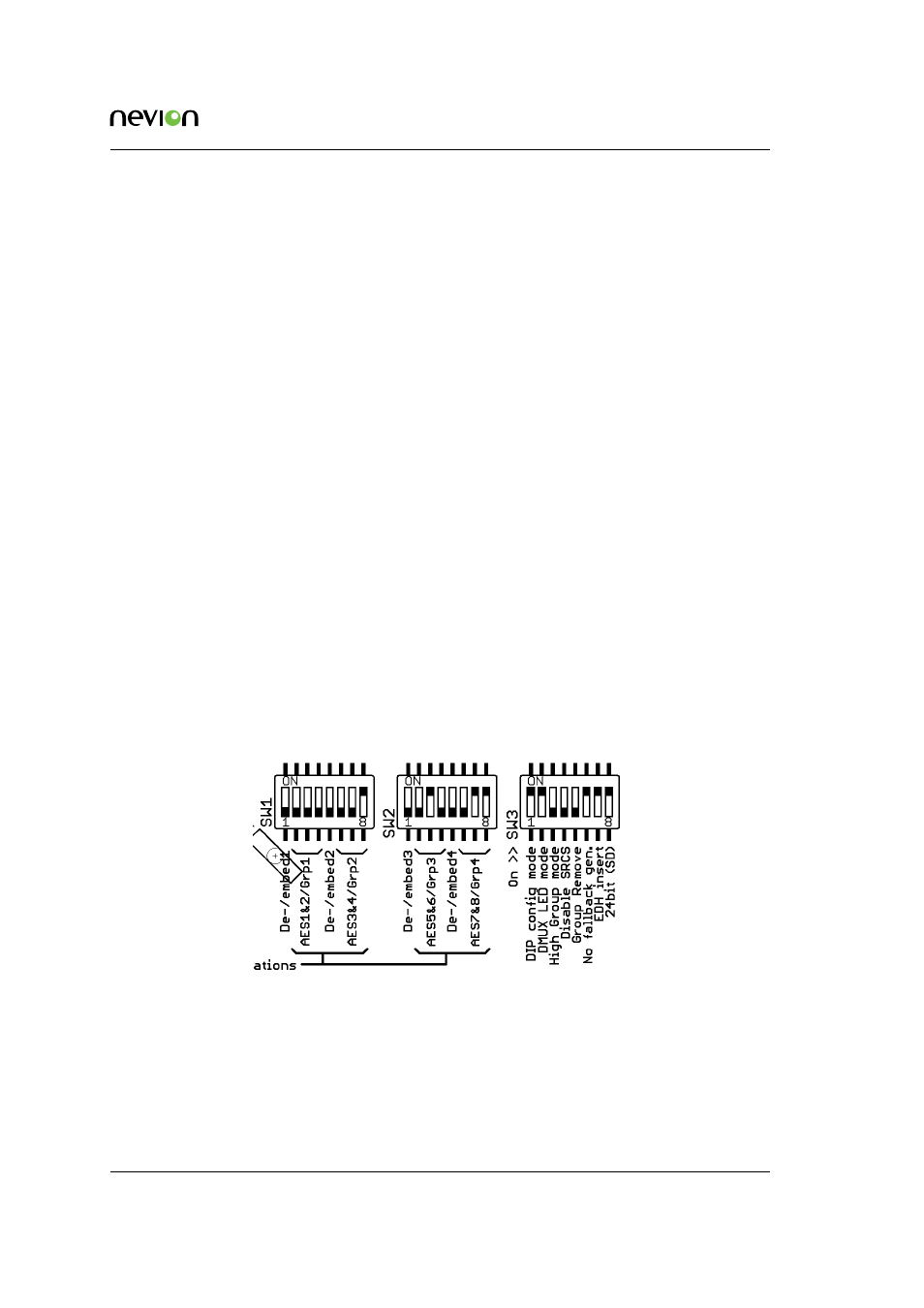6 fallback generator control, sw3.6, 7 edh insert, sw3.7, 8 24 bit (sd), sw3.7 – Nevion AV-3G-XMUX User Manual
Page 22: 3 dip configuration examples, Fallback generator control, sw3.6, Edh insert, sw3.7, 24 bit (sd), sw3.7, Dip configuration examples, 3 dip configuration examples

Configuration
22
AV-3G-XMUX User Manual Rev. B
6.2.6 Fallback generator control, SW3.6
This switch is used to control the outputs when the input signals are not present.
On: The Video output will be disabled if the input signal is removed. The AES outputs will be
disabled if the source routed to that output is not present. The input presence of the AES signals is
embedded in the embedded audio data packet so that an upstream AES input failure will disable
an AES output which uses that embedded audio. To summarize: An AES input at an embedder
input will control the muting at the output of the de-embedder.
Off: The internal video generator will be used as an input until a valid video signal is detected on
one of the inputs. The AES outputs will always be on but the signal will be silent if the source is
absent.
6.2.7 EDH insert, SW3.7
SD video output from the module will contain an EDH packet if this switch is on.
6.2.8 24 bit (SD), SW3.7
SD video will contain embedded audio with a word length of 24 bits if the switch is on.
SD video will contain embedded audio with a word length of 20 bits if the switch is off.
3G/HD video will always contain embedded audio with a word length of 24 bits.
6.3 DIP configuration examples
Routing by the DIP switches is easy if all the AES port directions are the same.
Figure 6.2 : Example 1
The module above is set to de-embed all 4 audio groups. Each AES pair is set to each of the 4
groups.
The front panel LEDs will show the presence of audio groups in the received video signal.
